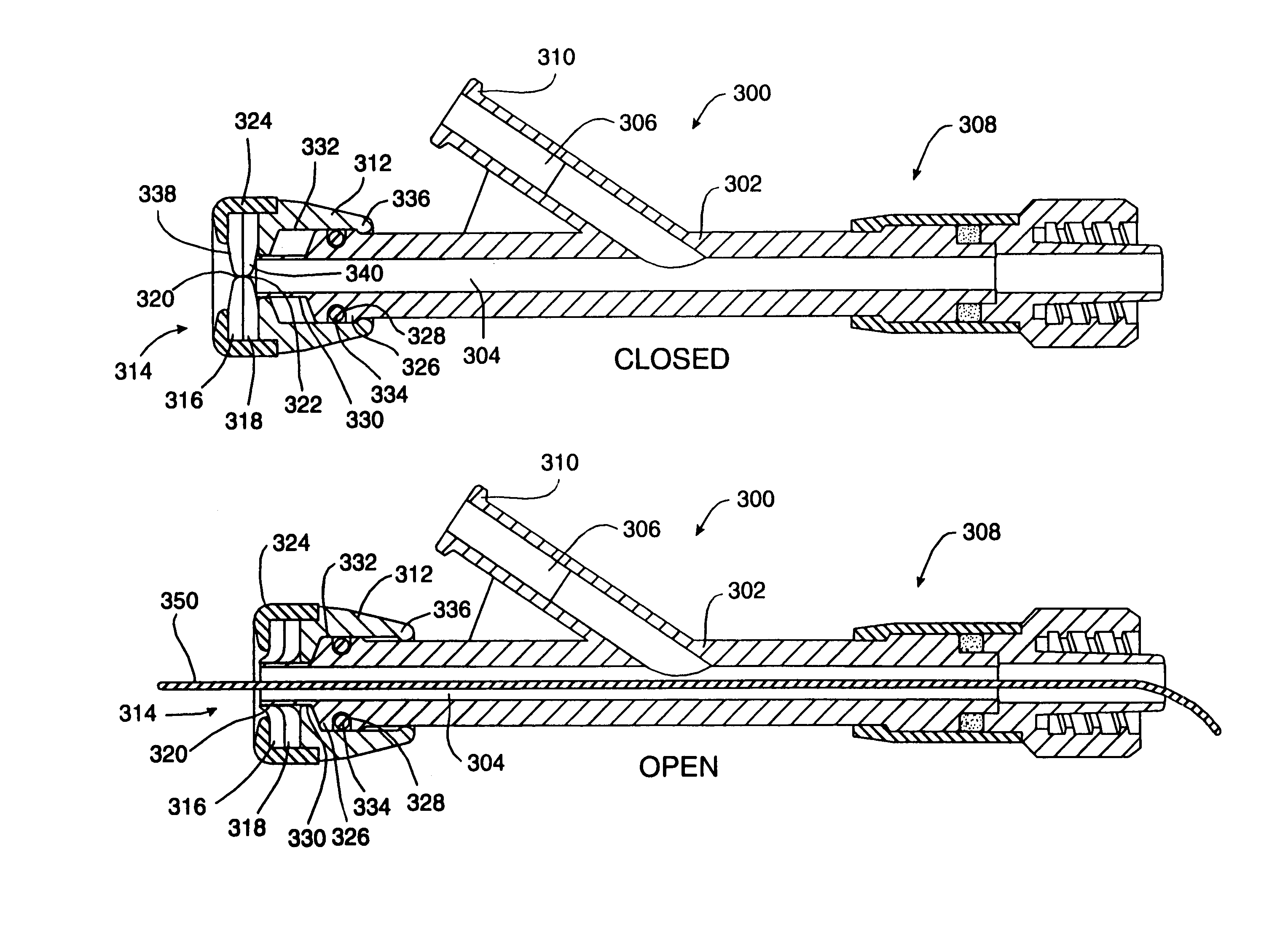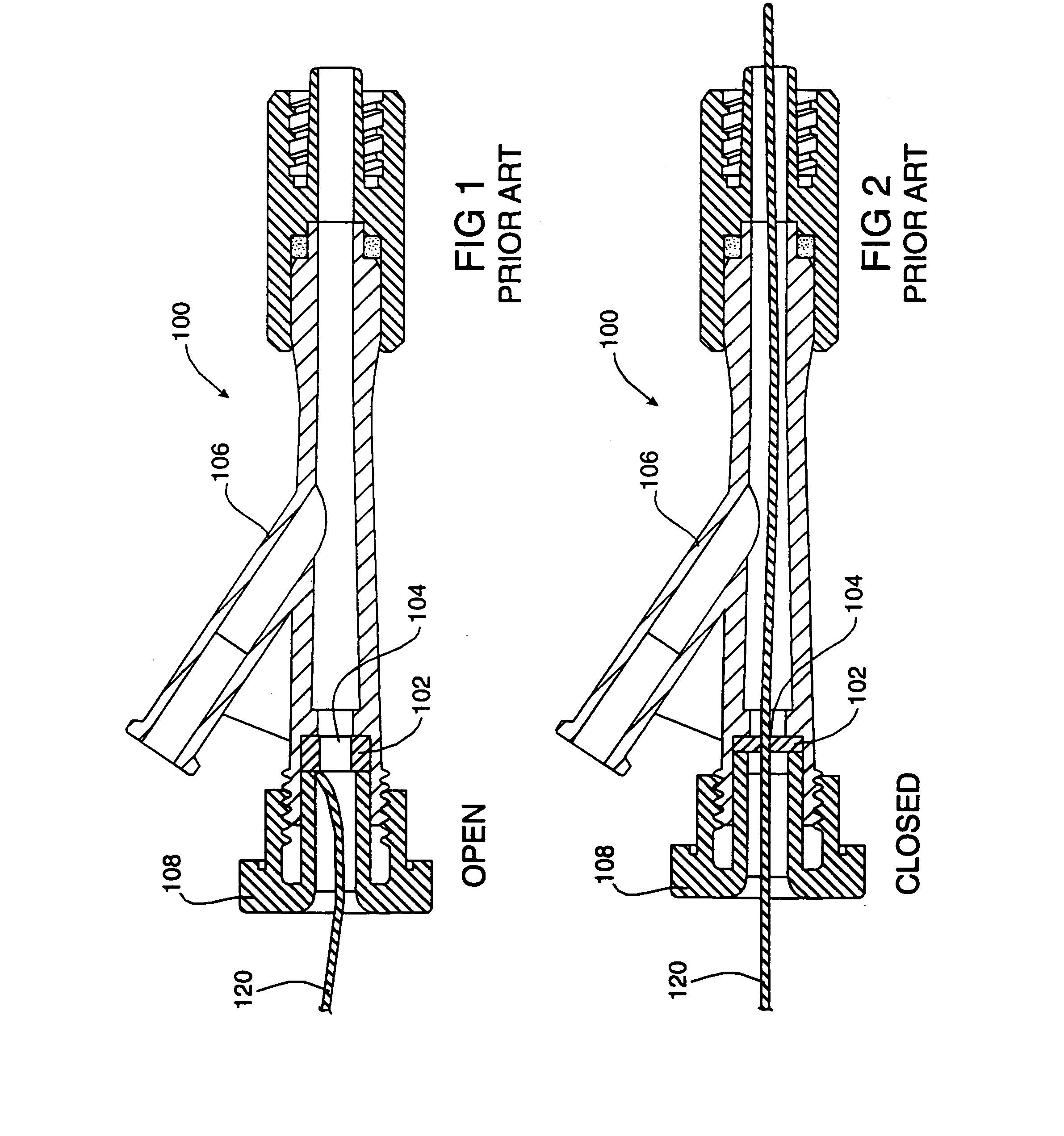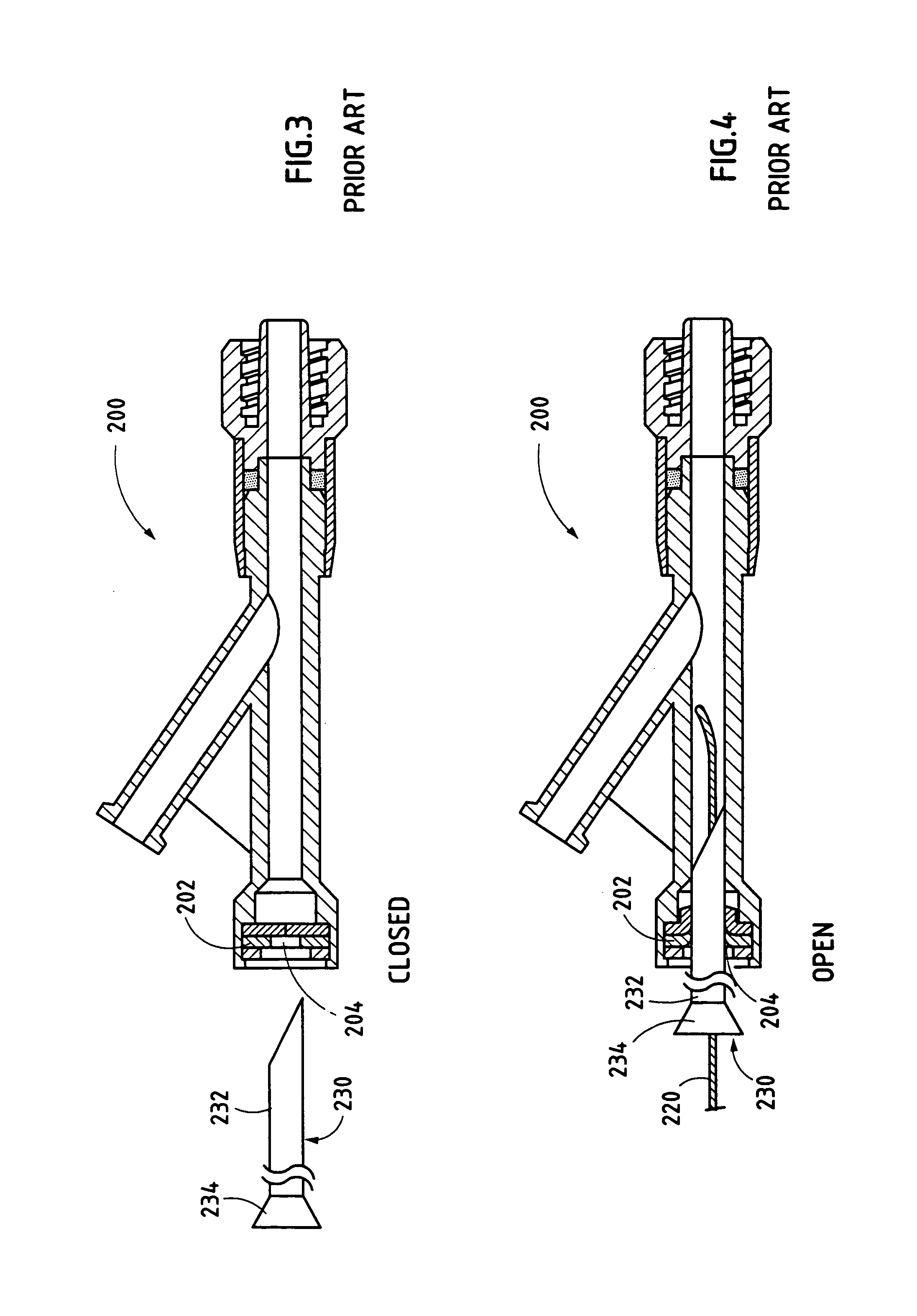Valved connector with closure operated by axial movement of the valve
a valve connector and valve technology, applied in the field of valve connectors, can solve the problems of leaking blood, impede, divert or damage the catheter, deformation or damage of fragile catheters or instruments,
- Summary
- Abstract
- Description
- Claims
- Application Information
AI Technical Summary
Benefits of technology
Problems solved by technology
Method used
Image
Examples
first embodiment
[0032]FIG. 5 shows a valved connector apparatus 300 constructed according to the present invention. The valved connector apparatus 300 may take any one of many possible physical configurations. For example, the valved connector apparatus 300 may be integrated into the proximal end of another device, such as a catheter, a guiding catheter, an introducer sheath or a surgical access cannula. Alternatively, the valved connector apparatus 300 may be configured as a separate component that is adapted for attachment to another device, such as a catheter, a guiding catheter, an introducer sheath or a surgical access cannula. In one particularly preferred embodiment of the invention, illustrated in FIG. 5, the valved connector apparatus 300 is configured with a Y-shaped connector body 302 having a main channel 304 and a lateral channel 306 branching off of the main channel 304. Preferably, the inner diameter of the main channel 304 is smooth and continuous all the way through the Y-shaped co...
second embodiment
[0038]FIG. 7 shows a valved connector apparatus 400 constructed according to the present invention. As with the previously described embodiment, the valved connector apparatus 400 may take any one of many possible physical configurations, including as a separate or integral component for use with a catheter, a guiding catheter, an introducer sheath or a surgical access cannula. A particularly preferred embodiment of the invention is illustrated in FIG. 7 having a Y-shaped connector body 402 with a main channel 404 and a lateral channel 406 branching off of the main channel 404. The inner diameter of the main channel 404 is preferably smooth and continuous all the way through the Y-shaped connector body 402 without abrupt steps, exposed edges or severe tapers. The Y-shaped connector body 402 has a first attachment mechanism 408, such as a rotatable male luer lock fitting or the like, connected to the distal end of the main channel 404, and a second attachment mechanism 410, such as a...
PUM
 Login to View More
Login to View More Abstract
Description
Claims
Application Information
 Login to View More
Login to View More - R&D
- Intellectual Property
- Life Sciences
- Materials
- Tech Scout
- Unparalleled Data Quality
- Higher Quality Content
- 60% Fewer Hallucinations
Browse by: Latest US Patents, China's latest patents, Technical Efficacy Thesaurus, Application Domain, Technology Topic, Popular Technical Reports.
© 2025 PatSnap. All rights reserved.Legal|Privacy policy|Modern Slavery Act Transparency Statement|Sitemap|About US| Contact US: help@patsnap.com



